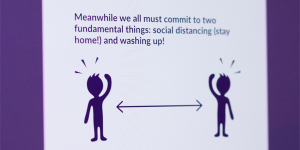
Ecommerce has become the mandatory way of conducting business in the modern economy. While ecommerce certainly has its challenges, this is also a promising opportunity for businesses to increase their customer base and access a wider audience through an ecommerce website.
One of the crucial requirements for the success of ecommerce websites is a well-developed UX design and an overall simple, positive customer experience. According to an article published by the senior UX/UI consultant at Pfizer, improved user experience raises a company’s conversions by about 83%.
No matter how unique your company or product is, if you do not conform to the best UX practices for consumers, your best efforts will be in vain.
To help you get started with just that, here are some top tips to designing a user-friendly ecommerce website.

5 tips for ecommerce UX design
Follow these 5 tips to craft a user experience for your ecommerce website that leads to happy customers and more conversions!
1. Ease of navigation
How easy is it to find things on your website?
Before you begin your website design, keep in mind that your user has zero knowledge about your business – which means that they will need to see everything you have to offer on the landing page. Also, the more choices you offer, the more confused your customers become.
So, the first rule is to keep your landing page clutter-free and offer minimum choices to click on. Avoid dumping too much information on your customers. Impression tests are a great way to quickly understand how effective your landing page is.
Via impression testing, you will learn what potential customers immediately think about your brand, what offerings they believe the site will have, lifestyle, and much more!
Do your customers a favor! Start our FREE TRIAL:

2. Functional optimization
How long does it take to load your website’s landing page? What about on mobile? Or app?
One practice that effortlessly shoos away clients and leads from your website is dumping too much information on the users. Another is to keep them waiting to access the landing page or the information it holds. Both of these, you need to avoid.
Having a slow landing page drives your users away. According to industry experts, a landing page should not take more than 2 seconds to load.
Slow loading is a death knell especially for ecommerce websites, who will no doubt have many competitors to click away to. There can be several issues interfering with the loading time of your page, such as third-party JavaScript, redirect loops, and more.
One way to identify the reasons for slow loading is to run your website through the waterfall visualization tool in Chrome’s developer’s tool.

Test your website, mobile app, and more with our FREE TRIAL!
3. User testing your design
Is your UX design user tested?
User testing is the best way to get an insight into your customer’s mind. According to a UX/UI designer, there may be no change or recommendation needed. However, from a user’s perspective, there may be a few crucial aspects that need amendments.
Remember: you are not your user or your customer. Even the most talented designer can carry with them the curse of knowledge.
Running a usability study will help you find the opportunities and flaws within your user experience, customer journey, and flows of all kinds. The ROI on user testing is obviously more than enough for you to give it a go. One of the best platforms to test your ecommerce UX is Trymata.

4. Adding appropriate site search functions
An appropriate site search functionality is a crucial requirement for the best consumer UX experience on ecommerce websites or apps. Customers who frequently interact with the search box are more likely to turn into a lead or a customer.
If there is no search option, the consumers will not find the relevant information they are looking for and leave the site.

5. Personalized user interface (UI)
Nothing makes a customer happy like when they find exactly what they are looking for. The best part is, you can also use this to provide a personalized user experience to the customers. Providing customized service goes a long way to enhance the user experience on your site.
Personalization is one of the best things that has happened to the ecommerce industry. Also, it is a great way to gain customer loyalty.
Make them feel special when they interact with your product.
Provide the best experience to your customers
UX/UI design is the cornerstone for ecommerce websites, which must specialize in creating a positive customer experience. Millions of people may visit your site, and it is important that they are able to find their way around your page for better interaction.
A better interaction means a smoother user flow, which leads to more customer conversions. The more sophisticated your UX design is, the higher the customer engagement with your business.
Test your website, mobile app, and more with our FREE TRIAL!




